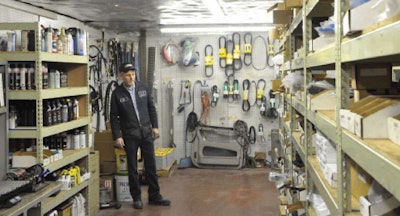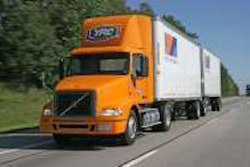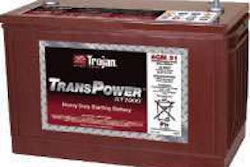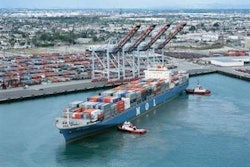It may cost time and money, but getting a handle on inventory can pay dividends
As the calendar turned at many truck fleets across the country, holiday celebrations were replaced with the odious chore of doing yearend inventory in parts shops. While no one enjoys doing parts inventory, it is vital for efficient maintenance operations and a fleet’s bottom line.

Having even a slightly disorganized parts shop can cost a company money every day. “If a technician’s time is worth a dollar a minute, and you have a guy hanging out at the parts window for half an hour waiting for someone to find a part – it isn’t hard to see the hit your operations are taking,” Stuart says.
Every second that a truck sits in a shop is a second the truck isn’t hauling freight. “One of your trucks might be in the shop for 30 minutes while someone tries to find a missing oil filter, then maybe another 30 minutes to get one delivered,” says C.J. Parsneau, inventory manager for LKQ Heavy Truck Division. “Minutes can turn into hours when you are running a large fleet. This will result in days, if not weeks, of combined downtime – time your trucks could be on the road.”
Painful but necessary
Organizing a neglected parts shop is a monumental task and, since no one wants to do it, it can get put off for months, sometimes years. “I’m working with a fleet now, and the parts situation is a disaster,” Stuart says. “It’s going to take us at least two months to sort out and organize it, and most fleets understandably don’t want to deal with that. There’s too much other stuff going on.”
Once the decision is made to reorganize a shop, a fleet should call all hands on deck and rebuild the shop almost from the ground up. “You have got to go in, pull everything out, strip the shop down, clean it, paint it and then reinstall your shelving and reorganize your inventory,” Stuart says. “You can’t do it halfway and be successful.”
The other mistake Stuart sees often is a fleet manager who decides the shop needs to be reorganized and simply tells the parts manager to do it since it’s his responsibility anyway. Because the job is simply too big for any one person to do, Stuart recommends assigning a five- or six-man team. Give it a deadline and have it do nothing else but work on straightening up the shop. “It’s hard to do, especially in today’s business climate, but it’s the only way to ensure success.”
“You can’t do it halfway and be successful.”
– Darry Stuart, president and owner, DWS Fleet Management Services
Once the hard work is done, everything should be sorted, labeled and counted. “Once you’ve done that, your repair times will improve because your parts department will be running like a Swiss watch,” says Stuart.
A tiger by the tail
Once the parts shop is reorganized, the next challenge is keeping it that way. Again, the incentive here is saving money, since parts inventories can have a huge impact on a fleet’s bottom line.
“Any held inventory costs a fleet money, but it also can save money in downtime and other maintenance efficiencies,” says Jim Chirico, regional parts sales manager for Navistar Parts. Fleets must balance the cost of carrying inventory with the inventory’s cost savings; inefficiency and mismanagement lead to higher costs.
 Parts tracking software allows fleets to be proactive when keeping tabs on parts usage and estimating appropriate purchasing amounts.
Parts tracking software allows fleets to be proactive when keeping tabs on parts usage and estimating appropriate purchasing amounts.An efficient way to think of inventory is to view each part or item as cash on the shelf; as such, a fleet will not want it to sit gathering dust, and they will not want much of it there at one time. “They will want a return on the investment,” Chirico says. “They will want to know where it is and keep it from depreciating.”
That’s a strategy shared by David Harper, parts manager for P.A.M. Transportation Services. “Our theory is that 90 days is too long,” Harper says.
A fleet’s inventory manager should use special care for parts that sit and do not move off the shelf quickly. “Always keep in mind that parts pricing isn’t carved in stone,” Chirico says. “Parts with volatile pricing may decrease in market price while still on the shelf.” Fleets also should exercise caution with parts that may become obsolete quickly and with special-order items that cannot be returned easily or have a stiff financial penalty for return.
P.A.M. has invested in parts tracking software that allows the Tontitown, Ark.-based fleet to be proactive when keeping tabs on parts usage and estimating appropriate purchasing amounts. “We have technology that tracks a part and lets us know when one has been sitting on our shelf for 90 days unused and it’s time to do something about it,” Harper says.
Still, the human element must remain involved. “We have reports telling us what the computer thinks we should buy, but we know there are seasonal aspects the computer can’t pick up on,” Harper says. “We’re going to need more wiper blades or antifreeze in the winter than we did six months ago. A computer can’t figure everything out for you.”
Parsneau suggests asking vendors for help with inventory maintenance. “Most vendors with outside sales representatives are happy to help maintain their portion of your inventory,” he says. Have a count sheet ready on the vendor’s scheduled restock day, and spot-check the vendor’s work randomly.
Paccar Parts also offers fleets a complete inventory management program through Kenworth and Peterbilt dealers called PremierCare Connect and TruckCare Connect, respectively. The program provides complete purchasing inventory control and allows fleets to track all parts and labor costs on each vehicle.
Jeff Sass, general marketing manager for Paccar Parts, says the Connect system can help fleets manage all mandatory services tracked under the Federal Motor Carrier Safety Administration’s new Compliance Safety Accountability safety measurement system. “It also connects the customer to their dealer for immediate inventory replenishment and optimal pricing,” Sass says. Fleets that maximize the Connect system’s benefits also receive incentives for their purchases.
Beware of the zombies
And what about “zombie parts” – those old doodads that have been sitting on a shelf for years gathering dust? Should they be thrown away? Should a fleet list them on eBay and try to regain some of its investment?
Programs are available to help fleets recoup a portion of the cost of an unwanted part. Some allow the customer to return any unwanted, unused parts at full retail cost; in return, the customer must purchase a “multiple” of the return value over the next five years.
At the least, check the vendor’s return policy before trashing a zombie part. “Although you might be outside the return window, you can probably work something out,” Parsneau says. “Offsetting your return with a stock order is the most common practice. If this does not work, ask to offset the order plus 20 percent. You might end up overstocking on a few fast-moving parts, but that’s OK. Both you and your vendor win.” n













